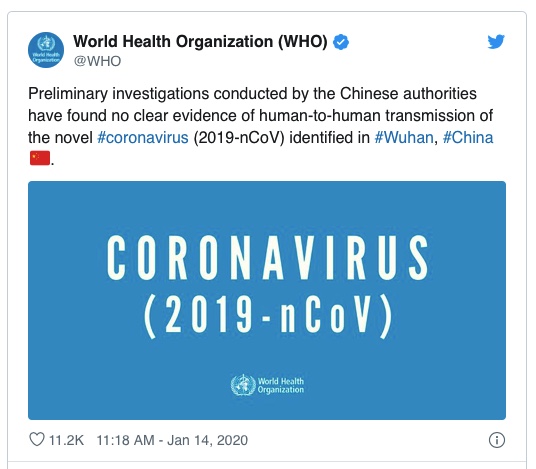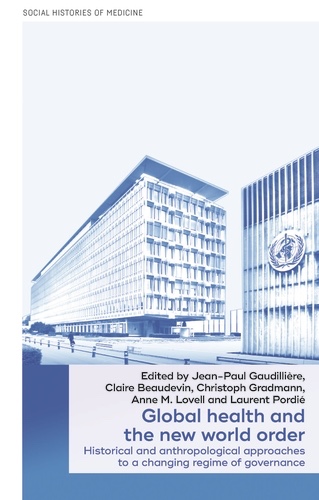
This timeline is an aid to decision-making during the recovery from the pandemic and how to better prepare for outbreaks in the post-COVID-19 pandemic policy environment.
2015
2016
Domestic Resource Mobilization in
Global Health Security
“This session will explore the issue of major infectious disease outbreaks as a threat to economic and human security, and the need for domestic resource mobilization for pandemic preparedness. Emphasis will be placed on the situations within lower-middle and low-income countries, which often lack the financial, human, and physical resources required to strengthen their global health security infrastructure. This includes but is not limited to emergency response, health workforce, surveillance, procurement of countermeasures, cold and supply chain management, and adequate health systems.”

2019
October
“The exercise illustrated areas where public/private partnerships will be necessary during the response to a severe pandemic in order to diminish large-scale economic and societal consequences.
Statement about nCoV and our pandemic exercise
In recent years, the world has seen a growing number of epidemic events, amounting to approximately 200 events annually. These events are increasing, and they are disruptive to health, economies, and society. Managing these events already strains global capacity, even absent a pandemic threat. Experts agree that it is only a matter of time before one of these epidemics becomes global—a pandemic with potentially catastrophic consequences. A severe pandemic, which becomes “Event 201,” would require reliable cooperation among several industries, national governments, and key international institutions.”
“This book develops an examination and critique of human extinction as a result of the ‘next #pandemic’ and turns attention towards the role of pandemic catastrophe in the renegotiation of what it means to be human.”

The Times: En suite loos, wi-fi and showers . . . but our trains can’t keep up with China’s
“Anyone with a real interest in business and global trade will have been in London last week. To look on as the government tried to enact Brexit legislation? No — to attend the World Chinese Entrepreneurs Convention.”
“… It is 30 years old, but came to Europe for the first time only last week. …
“3,000 delegates from Chinese-owned businesses representing a large part of world trade were at the ExCel centre in Docklands for three days.
“What’s a girl to do when she gets an invitation to the key dinner for this event?.”
November
“ONCE YOU’RE IN THE MIDST OF A SEVERE PANDEMIC, YOUR OPTIONS ARE VERY LIMITED. THE GREATEST GOOD CAN HAPPEN WITH PRE-PLANNING.” Eric Toner, Senior scholar, Johns Hopkins Center for Health Security
2020
Nature: Two decades of pandemic war games failed to account for Donald Trump
The scenarios foresaw leaky travel bans, a scramble for vaccines and disputes between state and federal leaders, but none could anticipate the current levels of dysfunction in the United States.
January
February
- On February 2, 2020, CDC generated enough SARS-CoV-2 grown in cell culture to distribute to medical and scientific researchers.
- On February 4, 2020, CDC shipped SARS-CoV-2 to the BEI Resources Repository.
March

“A Canadian team of scientists has successfully isolated a strain of the coronavirus and grown samples in a lab to help study the pathogen responsible for the deadly global pandemic.
“Researchers from Sunnybrook Research Institute, McMaster University and the University of Toronto, all in Canada, isolated the virus from two specimens and then cultivated it in a secure containment facility.”
December
2021
December
What the Wuhan ‘lab leak’ tells us about the future of biowarfare
June
CBC: ‘Wake-up call for Canada’: Security experts say case of 2 fired scientists could point to espionage
Couple shared information, virus samples from high-security lab with Chinese institute
“It appears that what you might well call Chinese agents infiltrated one of the highest prized national security elements when it comes to biosecurity and biodefence,” said Christian Leuprecht, a security expert and professor at the Royal Military College and Queen’s University.
2022
February
Maclean’s: A brilliant scientist was mysteriously fired from a Winnipeg virus lab. No one knows why.
Further Reading:
“The phrase ‘global health’ appears ubiquitously in contemporary medical spheres, from academic research programs to websites of pharmaceutical companies. In its most visible manifestation, global health refers to strategies addressing major epidemics and endemic conditions through philanthropy, and multilateral, private-public partnerships. This book explores the origins of global health, a new regime of health intervention in countries of the global South born around 1990, examining its assemblages of knowledge, practices and policies.
The volume proposes an encompassing view of the transition from international public health to global health, bringing together historians and anthropologists to analyse why new modes of “interventions on the life of others” recently appeared and how they blur the classical divides between North and South. The contributors argue that not only does the global health enterprise signal a significant departure from the postwar targets and modes of operations typical of international public health, but that new configurations of action have moved global health beyond concerns with infectious diseases and state-based programs.
The book will appeal to academics, students and health professionals interested in new discussions about the transnational circulation of drugs, bugs, therapies, biomedical technologies and people in the context of the “neo-liberal turn” in development practices.”

My background:
CASE STUDY 7: UNOSSC + UNDP | 2007 – 2016
CASE STUDY 5: GOSH/ICH Child Health Portal | 2001 – 2003
CASE STUDY 4: UN + UNDP Mongolia | 1997 – 1999
Hannah Institute For The History Of Medicine | 1992 – 1994
Philippine Conference Tackles Asia’s AIDS Crisis
Taking Medicine To The People: Four Innovators In Community Health
Take Two Big Doses Of Humanity And Call Me In The Morning
Women scientists prove potency of Mongolian beverage
ORCID iD: https://orcid.org/0000-0001-5311-1052.
© David South Consulting 2023





You must be logged in to post a comment.